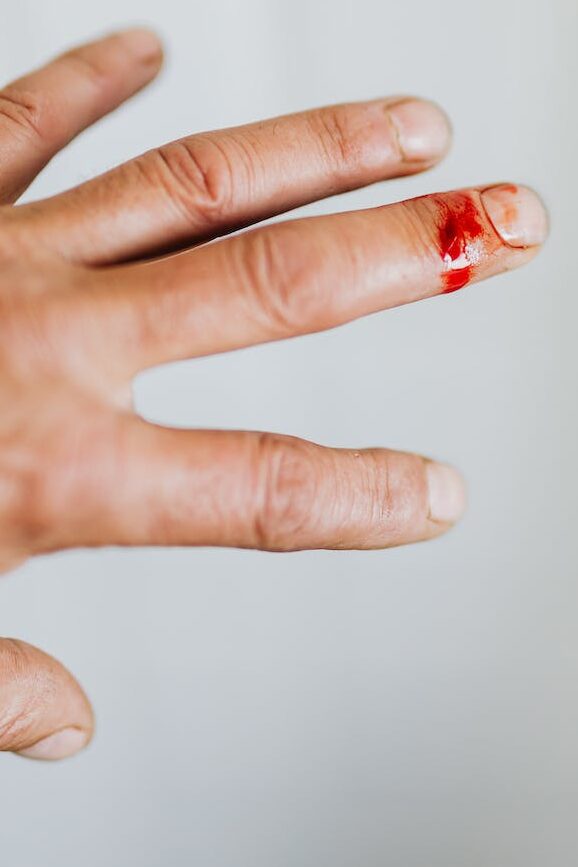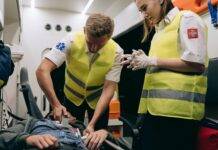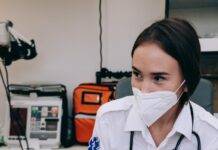
Bleeding Control: A Guide to Managing and Responding to Bleeding Incidents
Bleeding Control : Bleeding incidents can happen unexpectedly, whether due to accidents, injuries, or medical conditions. Knowing how to effectively manage and respond to bleeding is crucial for both personal safety and the well-being of others. In this comprehensive guide, we will delve into the different types of bleeding, the steps to control bleeding, and essential first aid measures to employ in various scenarios.
Bleeding incidents can range from minor cuts to severe injuries, and it’s crucial to respond promptly and appropriately to ensure the best possible outcome.
Types of Bleeding
Understanding the different types of bleeding is the foundation for effective management. Arterial bleeding, which comes from arteries, is often characterized by bright red blood that spurts rhythmically. Venous bleeding, originating from veins, produces a steadier flow of dark red blood. Capillary bleeding, from capillaries, is less intense and typically oozes.
Immediate Response
When faced with a bleeding incident, it’s important to stay calm and call for help if needed. Assess the severity of bleeding by observing the amount of blood and the rate of flow.
Controlling Bleeding: Basic Steps
Direct pressure is the primary method for controlling bleeding. Applying firm and steady pressure directly on the wound helps stem the blood flow. Elevating the injured area above the heart can also aid in reducing blood flow. Tourniquets should only be used as a last resort for severe bleeding and should be applied properly to prevent further damage.
Specific Scenarios and First Aid
For minor cuts and abrasions, clean the wound thoroughly and apply an adhesive bandage. Nosebleeds can be managed by pinching the nostrils and leaning forward slightly. Internal bleeding may manifest as abdominal pain and swelling and requires immediate medical attention.
Dealing with Severe Bleeding
Hemorrhage, or uncontrolled bleeding, is a critical condition requiring swift action. Packing wounds with sterile gauze can help promote clotting and control bleeding effectively.
Bleeding Disorders and Medical Conditions
Individuals with hemophilia are at a higher risk of excessive bleeding due to a lack of clotting factors. Some medications, like blood thinners, can also contribute to bleeding problems.
Preventing Infection and Further Complications
After stopping the bleeding, clean the wound carefully to prevent infection. Keep an eye out for signs of infection such as redness, swelling, and pus.
Seeking Professional Medical Help
If bleeding cannot be controlled with initial first aid measures or if the bleeding is severe, seeking professional medical help is essential. Effective communication with healthcare providers ensures accurate diagnosis and treatment.
Training and Preparedness
Undergoing first aid training equips you with the skills to respond effectively in bleeding emergencies. Assembling a bleeding control kit with essentials like bandages, gauze, and gloves is a proactive step.
Conclusion
In a bleeding emergency, knowing how to respond swiftly can be life-saving. By understanding the types of bleeding, employing appropriate first aid measures, and seeking professional medical help when necessary, you can play a vital role in preventing further harm.
Rescue Procedures: Ensuring Safety and Preparedness
AED Usage: Saving Lives through Automated External Defibrillators
FAQs
- Q: What is the best way to stop bleeding from a minor cut?
- A: Applying direct pressure with a clean cloth or bandage is effective in stopping bleeding from minor cuts.
- Q: When should I consider using a tourniquet?
- A: Tourniquets should only be used as a last resort for severe bleeding that cannot be controlled by other means.
- Q: Are there any long-term complications of internal bleeding?
- A: Internal bleeding can lead to serious complications such as organ damage, so seeking medical help promptly is crucial.
- Q: Can I prevent bleeding disorders?
- A: While you cannot prevent genetic bleeding disorders, you can manage them with appropriate medical care.
- Q: What should be included in a bleeding control kit?
- A: A bleeding control kit should include items like bandages, sterile gauze, adhesive tape, gloves, and scissors.
























